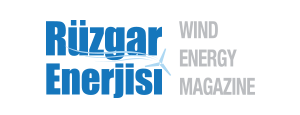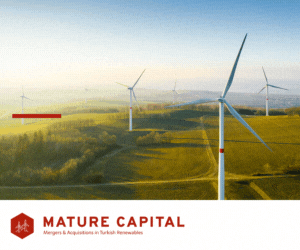Sector News
WIND ENERGY: A PERSPECTIVE ON GENDER

Wind energy, like many other parts energy industry worldwide, continues domination by males. Still, opportunities exist for improving gender balance, larger use of women skills, and, entrench wind power as part of an inclusive and sustainable energy system for the future.
The International Renewable Energy Agency (IRENA) conducted the survey jointly with the Global Wind Energy Council (GWEC) and the Global Women’s Network for the Energy Transition (GWNET).
The Survey
The survey sought evaluating the importance of barriers to recruitment in wind industry.
Because norms and roles are similar in origin, they, in fact, reinforce each other. Many respondents also highlighted the lack of gender targets and the prevalence of certain hiring practices as important. Both may give a sight as an expression of male-biased norms. And thus, to some extent a variation of the top two barriers. Other barriers has shown less correlation, especially educational backgrounds and self-perceptions of women. Results reveal that participants are confident that women in the field have proper preparation for entrance into sector.
Gender pay imbalance in same works are difficult to asses for some reasons, but the perception of a persistent gap remains strong. The literature and other surveys show that in the wider economy, pay gaps widen as women move up the career ladder, and therefore the biggest inequities exist for executive positions.
Pay Imbalance
Pay discrepancies between men and women can weaken the appeal of an industry. Understandably, they may temper women’s interest in joining an enterprise or other organisation, or their desire to remain for the long run. While IRENA’s survey did not include any pay data, it reveals respondents’ perceptions.
Individual respondents were asked for men’s and women’s equal works and payments. Overall, 40% of all respondents believed that men were paid more for equivalent work. 60% believed that pay was equal or higher for women for the wind sector. The replies indicate that respondents perceive less pay inequality in the wind sector than in the overall economy. 68% of the respondents perceive that men are paid more .
No Difference Based on Region or Activity
Survey responses did not indicate any significant differences by region, or by main activity of an employee’s organisation. Organisation size, however had a significant impact on perceptions of pay equality. These demonstrate employees in larger organisations being less likely to believe that men and women were paid equally. Similarly, there were disparities in correlation with educational background. Individuals with no higher than a high school degree had a significantly lower perception of pay equality than other individuals.
By gender break, 76% of male respondents indicated their perception of the existence of pay equality in the wind sector. This is in comparison with just 45% of female respondents. The perception gap was even greater for pay equality across the economy as a whole.
Among other findings:
- Women represent only 21% of the wind energy workforce (based on survey responses). This is in comparison with to 32% in renewables overall and 22% in traditional energy industries like oil and gas.
- Perceptions of gender roles and cultural-social norms form a major barrier to gender equality.
- Perceived wage inequalities are lower in wind energy (40%) than in the overall economy (68%).
- Perception of women is to possess valuable skills and knowledge.
- Europe and North America show the highest share of women in wind energy jobs, at 26%.
Improving Gender Balance: Practices
On basis of interviews with women and men in the sustainable energy sector, a structural and environmental analysis and a literature review emerges. GWNET identified the following as good practices for greater women participation in better conditions:
- Seeking greater gender equality by promoting girls with a demonstrable aptitude.
- Sustainable energy sector’s promotion as a workplace choice for women and men with families.
- Putting in place quotas for leadership roles to break unconscious biases and highlight women’s leadership.
- Removing biases in recruitment, performance reviews; equal pay and promotions.
- Universalising equitable parental and career leave, childcare for parents, return-to-work programs; flexible work; and mentoring.
- o Adopting a zero-tolerance policy toward sexual harassment and discrimination in the workplace.
Transformative change is the responsibility of the most senior person in an organisation. And, it requires objectives’ and initiatives’ monitoring. It is a matter of priority to the organisation’s board or leaders. Commitments of time, resources and personnel are essential.
No one, corporation, institution, state, company has found a unique, perfect solution for gender inequality in the industry. Beyond change in a single organisation, for improving gender balance, coalitions of the like-minded can work. It may bring together governments, industry, labor representatives, women association, and international organisations.
-

 Events5 years ago
Events5 years agoCanada and Turkey women working in the renewable energy sector in met
-

 Manufacturers of wind turbines5 years ago
Manufacturers of wind turbines5 years agoGE’s Haliade-X 12 MW prototype to be installed in Rotterdam
-

 Operations and Maintenance6 years ago
Operations and Maintenance6 years agoGENBA is on the rise; another milestone passed by in global existence
-

 Genel8 years ago
Genel8 years agoEWT launches the DW61, It’s most efficient and high energy producing wind turbine
-

 Genel9 years ago
Genel9 years agoInternet of things will empower the wind energy power plants
-

 Turbine Manufacturing6 years ago
Turbine Manufacturing6 years agoİğrek Makina focused on developing and producing Machine Tools and Wind Energy Turbines
-

 Energy management systems5 years ago
Energy management systems5 years agoDemand/Supply – Renewable energy with guarantees of origin (GO)
-

 Events5 years ago
Events5 years agoKey Players from 10 Nations will Show Their Strong Positions at APWEE
-

 Manufacturers of wind turbines5 years ago
Manufacturers of wind turbines5 years agoThe Nordex Group receives first order for Delta4000 turbines from the USA
-

 Manufacturers of wind turbines4 years ago
Manufacturers of wind turbines4 years agoENERCON installs E-160 EP5 prototype
-

 Genel7 years ago
Genel7 years agoZorlu energy envisages a bold new future based on renewables
-

 Manufacturers of wind turbines5 years ago
Manufacturers of wind turbines5 years agoENERCON and Lagerwey together develop two new WEC types















